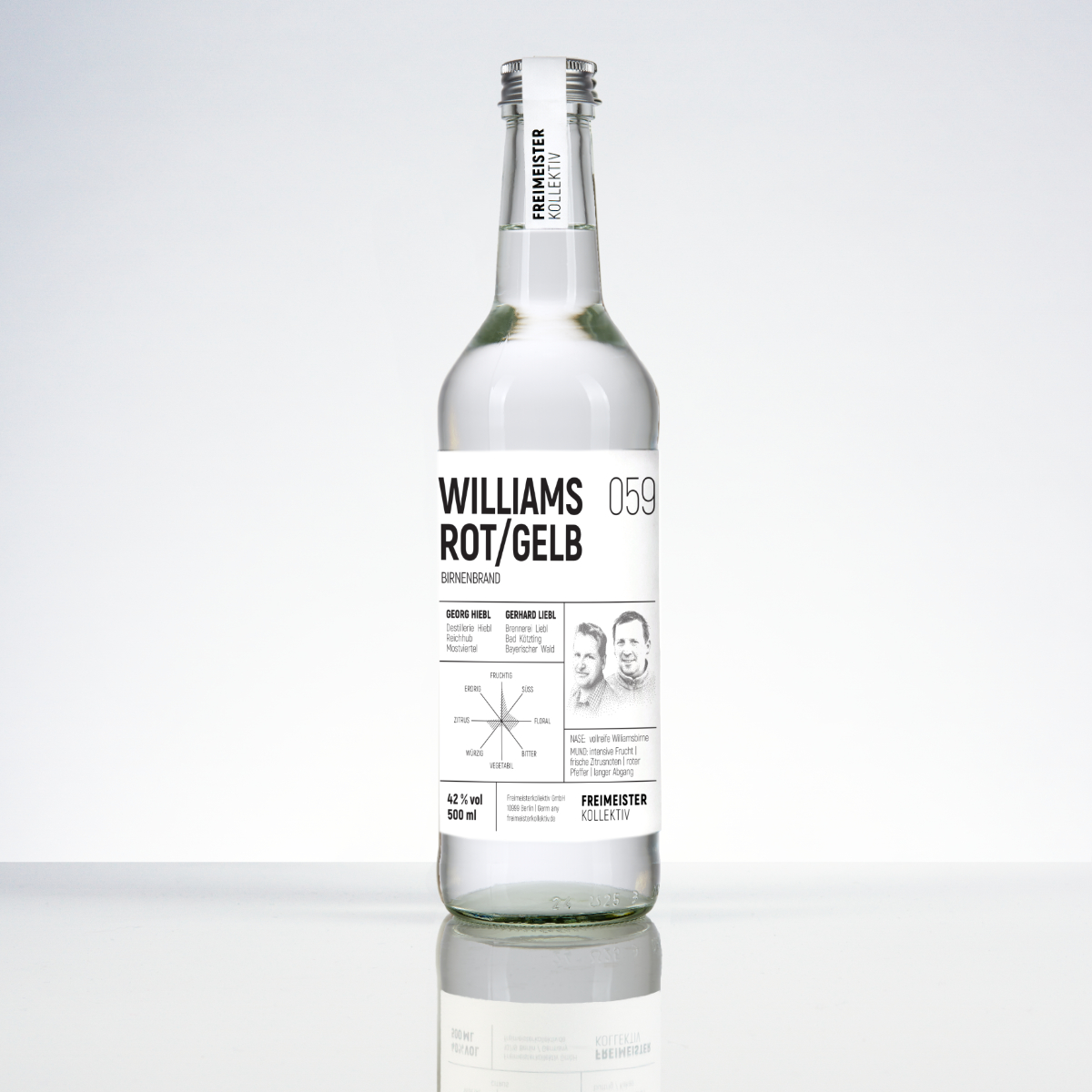Exclusively for the Freimeisterkollectiv, two of the world’s best fruit distillers have joined forces. Georg Hiebl, who is based in the Mostviertel region of Austria, and Gerhard Liebl from the Bavarian Forest in Germany. Together, the two have won well over 1,000 medals in international competitions. Both have distilled hundreds of different raw materials each. For the Freimeisterkollektiv, Georg and Gerhard choose two varieties of the finest of all pear varieties: red and yellow Williams-Christ pears. With WILLIAMS ROT/GELB 059, the two ingenious distillers set a new quality standard for pear eau-de-vie.
fully ripe Williams pear
intense fruit | fresh citrus notes
red pepper | long finish
Red and yellow Williams' bon chrétien pear | yeast | water
-

Gerhard Liebl
Distiller | Bad Kötzting, Bavarian Forest
Founded in the Bavarian Forest as a grocery store by Maria Liebl in 1935, her husband and son transformed the post-war family business into a wine and spirits trade. Around 1970, the Liebl family began to produce their own spirits, the first own products were next Bärwurzschnaps the regional Blutwurzlikör (bloodworm liqueur).
Today, the distillery is operated by Gerhard Liebl in the third generation. As one of the best distillers in Germany, he distils not only traditional specialties of the Bavarian Forest but also fruit eau-de-vie and liqueurs as well as whiskey and gin. 2018 Gerhard Liebl won the overall victory in the Fruit Brandy Olympiad for the third time: he was awarded the title of “Distiller of the Year in Gold” at the Destillata in Austria.
-

Georg Hiebl
Distiller | Mostviertel, Lower Austria
Georg Hiebl comes from a family that has been farming in the Lower Austrian Mostviertel for generations. The over 300-year-old square farm lies between orchards and ancient pear trees.
When Georg Hiebl took over agriculture from his father, he realigned the business, because in the age of industrialized agriculture he saw no future for a small business without specialization. The decision to expand the distillery was shaped by both a passionate interest in flavors and economic considerations. Since 1997 he has dedicated himself exclusively to the distillation of fine spirits.Spurred on by his first successes, he continuously deepened his knowledge of the secret of high-quality distillates and began to experiment with unusual varieties. After several years of experimentation, he quickly rose to become one of the best in his field. He has probably won more awards than anyone else in his guild. Georg Hiebl won the gold or silver medal six times for the overall rating at the Destillata . The IWSC in London named him Boutique Distiller of the Year in 2014.
Other products of this Freimeister:
Products of this Freimeister:
QUINOA 154
TELLICHERRY PFEFFER 106
ZITRONENVERBENE 110
PFEFFERMINZE 122
KRAUSEMINZE 123
ROSMARIN 126
SALBEI 128
ESTRAGON 129
WERMUTKRAUT 130
INGWER 131
GALGANT 133
KURKUMA 134
ECHTER KORIANDER 141
DILL 142

